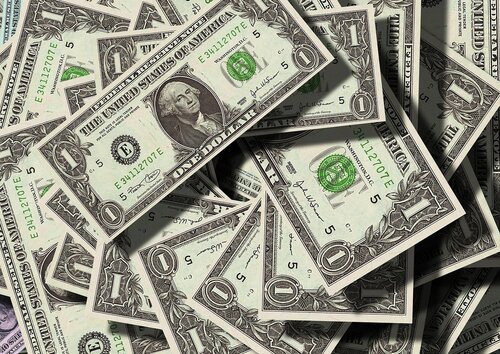Le dollar, pris dans une spirale baissière
Le dollar paye l’augmentation récente des cas de Covid-19, sa perte d’activité et les tensions avec la Chine. Depuis mars, la devise américaine a perdu près de 12 % face à l’euro, passant de 1,06 à 1,19 dollar fin juillet. Sur ce seul mois, la chute a été de 5 %.
Selon plusieurs spécialistes des marchés des grandes banques d’investissement, la baisse du dollar devrait se poursuivre quand bien même son rythme pourrait ralentir au cours des prochains mois. Deutsche Bank mise sur une parité euro-dollar à 1,20 fin 2020, à 1,25 fin 2021, 1,30 fin 2022. Toutefois, dans une note récente, ses analystes ont estimé que ces prévisions étaient probablement « trop prudentes ». Chez Goldman Sachs, les stratégistes anticipent une baisse supplémentaire de l’indice du dollar de plus de 5 % durant les 12 prochains mois.
Des rendements moins attractifs
Si début 2020, en plaçant leurs liquidités dans le dollar, les investisseurs pouvaient espérer bénéficier d’une rémunération intéressante, la crise de coronavirus a limité les rendements offerts et par conséquent l’attrait des flux de capitaux aux États-Unis. « Les taux américains, courts et longs, étaient les plus rémunérateurs au sein du G10 pendant presque 3 ans », mais « ils sont désormais loin d’être exceptionnels », témoigne Deutsche Bank. En mars, la réserve fédérale américaine (FED) a de nouveau décidé d’abaisser d’un point ses taux directeurs. Les taux se situent dorénavant entre 0 et 0,25 %.
Le dollar est-il toujours une valeur refuge ?
Le dollar perd progressivement de sa superbe à la faveur de l’euro et surtout de l’or qui s’impose désormais comme une valeur refuge de référence face à la pandémie et aux tensions sino-américaines. Aidé par la dépréciation du dollar, l’or a atteint de nouveaux sommets historiques en juillet dernier pour culminer à 1945, 28 dollars l’once.
Si certains analystes considèrent que le dollar n’est plus une valeur refuge, la prime de sécurité dont il bénéficie étant de moins en moins justifiée pour les investisseurs, d’autres l’ont désigné meilleure devise refuge pour 2020. Dans une note de recherche publiée en août, Morgan Stanley indique que la baisse des taux américains en fait « une devise de financement plus attractive pour les carry trades ». Malgré cette prévision, les analystes s’attendent à ce que le sentiment de risque reste soutenu et maintiennent un « biais baissier » sur le dollar.
